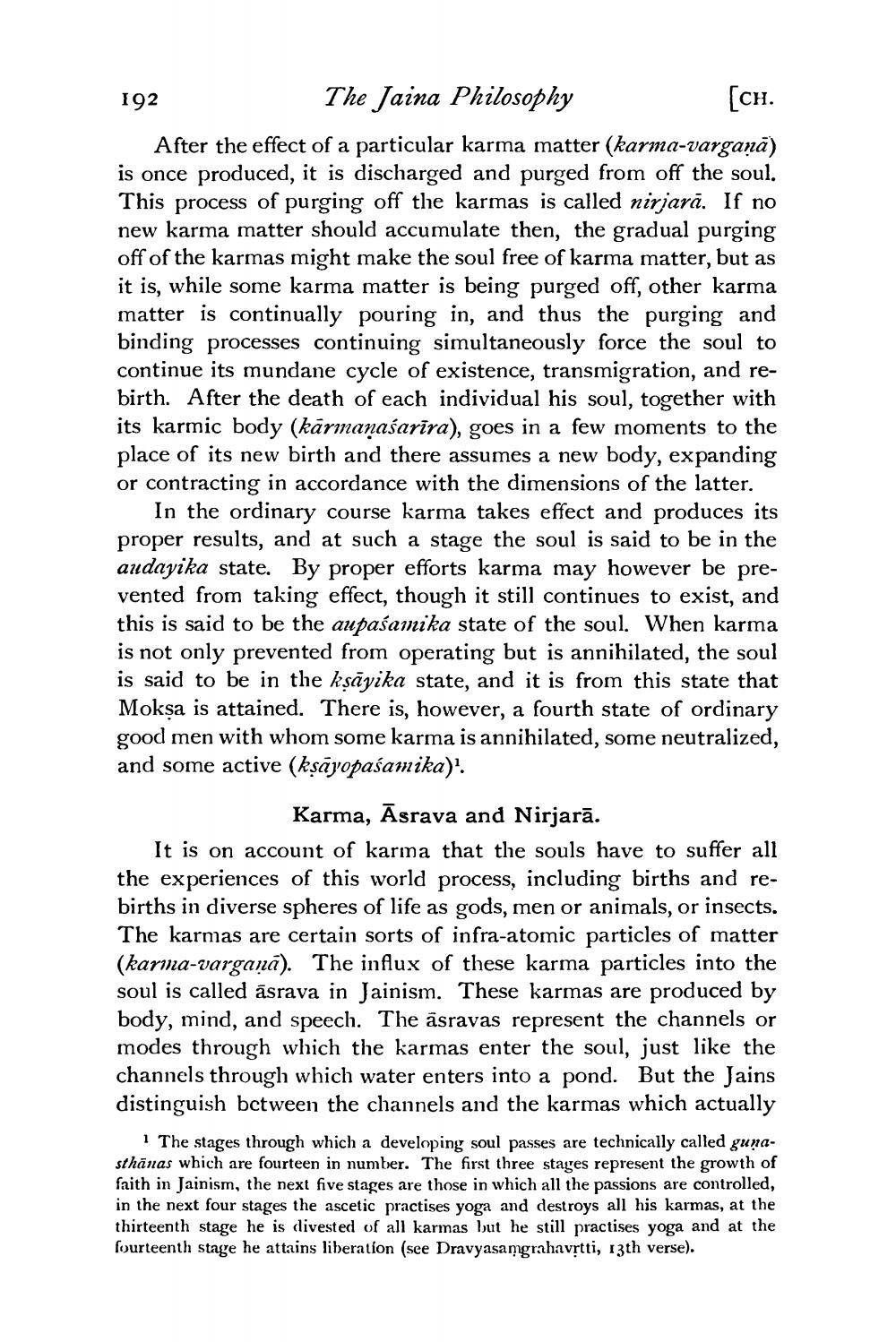________________
192
The Jaina Philosophy
[CH.
After the effect of a particular karma matter (karma-varganā) is once produced, it is discharged and purged from off the soul. This process of purging off the karmas is called nirjarā. If no new karma matter should accumulate then, the gradual purging off of the karmas might make the soul free of karma matter, but as it is, while some karma matter is being purged off, other karma matter is continually pouring in, and thus the purging and binding processes continuing simultaneously force the soul to continue its mundane cycle of existence, transmigration, and rebirth. After the death of each individual his soul, together with its karmic body (kārmanaśarīra), goes in a few moments to the place of its new birth and there assumes a new body, expanding or contracting in accordance with the dimensions of the latter.
In the ordinary course karma takes effect and produces its proper results, and at such a stage the soul is said to be in the audayika state. By proper efforts karma may however be prevented from taking effect, though it still continues to exist, and this is said to be the aupaśainika state of the soul. When karma is not only prevented from operating but is annihilated, the soul is said to be in the ksāyika state, and it is from this state that Moksa is attained. There is, however, a fourth state of ordinary good men with whom some karma is annihilated, some neutralized, and some active (ksāyopaśamika)'.
Karma, Āsrava and Nirjarā. It is on account of karına that the souls have to suffer all the experiences of this world process, including births and rebirths in diverse spheres of life as gods, men or animals, or insects. The karmas are certain sorts of infra-atomic particles of matter (karma-vargana). The influx of these karma particles into the soul is called asrava in Jainism. These karmas are produced by body, mind, and speech. The asravas represent the channels or modes through which the karmas enter the soul, just like the channels through which water enters into a pond. But the Jains distinguish between the channels and the karmas which actually
1 The stages through which a developing soul passes are technically called gunasthānas which are fourteen in number. The first three stages represent the growth of faith in Jainism, the next five stages are those in which all the passions are controlled, in the next four stages the ascetic practises yoga and destroys all his karmas, at the thirteenth stage he is divested of all karmas but he still practises yoga and at the fourteenth stage he attains liberation (see Dravyasamgrahavrtti, 13th verse).




